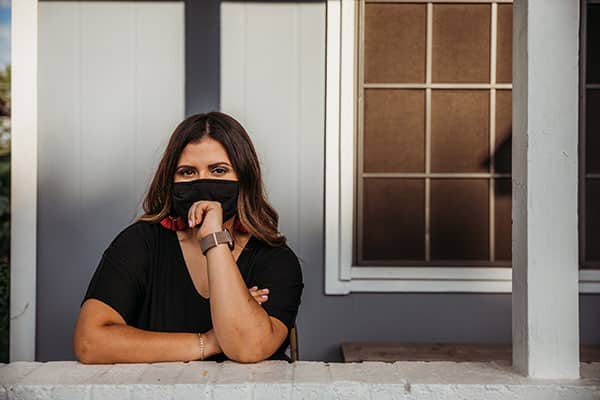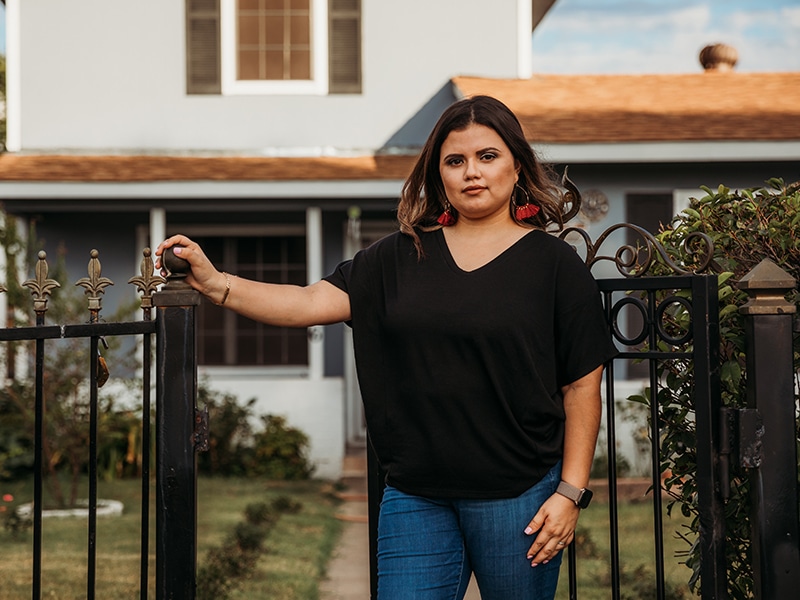When Érica Mendez got her smartwatch, she thought it would help her manage phone calls and text messages. She never imagined it could detect COVID-19 symptoms, let alone help save her life and maybe even her grandmother’s.
The 29-year-old Dallas resident was taking a lunch break one day in July when her watch began sending her alerts. Her heart rate was skyrocketing.
“130…150…180,” the numbers flashed, well above the normal resting heart rate of 60 to 100 beats per minute.
Érica began to feel pain in her chest and her head. She immediately left work and drove to Methodist Dallas Medical Center.
“I was worried I was going to have a heart attack,” she says.
Érica’s unexpected detour to the hospital led to a positive COVID-19 test and a weeklong stay.
LESSER KNOWN SYMPTOMS
Looking back, Érica remembers having chills and headaches a couple of days before her heart rate spiked. At the time, she didn’t think much of it because she regularly gets migraines.
“Most people with COVID-19, about 81%, have mild to moderate symptoms, such as muscle aches, a headache, and maybe a sore throat and runny nose — or even digestive symptoms,” says Miguel Villamil, MD, internal medicine physician on the medical staff at Methodist Dallas. “The severity of the disease can depend on risk factors, such as age, obesity, or other pre-existing conditions.”
The infection is progressive, he says, so people may feel some fatigue and discomfort before more severe symptoms like shortness of breath, coughing, and fever emerge.
Doctors say young adults are coming to the emergency department with abnormally high heart rates — just like Érica. And they’re more likely to wear fitness trackers.
“I actually feel like my watch saved my life,” Érica says. “If it weren’t for the alerts, I wouldn’t have gone to the hospital right away, and my symptoms could have gotten worse at home.”
Universities and tech companies are doing research to see if wearable gadgets, like Érica’s smartwatch, could be useful in the early detection of COVID-19 by tracking changes in heart rate, as well as body temperature.

PLASMA TREATMENT
When Érica was admitted, she was having trouble catching her breath. She’d later need supplemental oxygen.
The thing that surprised her most was the toll that COVID-19 took on her. She had developed pneumonia as an added complication of the coronavirus.
Doctors at Methodist Dallas treated her with steroids and convalescent plasma taken from the blood of an already recovered COVID-19 patient.
“The plasma contains antibodies that can fight the virus,” Dr. Villamil explains. “The theory is by transferring these antibodies to someone who’s still sick, it can help them fight off the infection.”
In Érica’s case, she seemed to respond well to the treatment.
“About 24 hours after receiving the plasma, I started to feel better,” she says.
INSIDE THE COVID-19 UNIT
Érica called her grandmother right away — it was one of the first things she did after arriving at the hospital. She lives with Érica, so she needed to get tested.
Doctors found that she, too, had low oxygen levels, and she also tested positive for COVID-19.
Érica says the two likely became sick after her grandmother was infected on the job as an essential worker.
“We see a lot of COVID-19 patients come in as families,” Dr. Villamil says. “If one person becomes exposed, he or she can pass it to other family members living with them. And it can be difficult, even impossible, to quarantine away from each other in some cases.”
Fortunately, Érica and her grandmother were among the majority of patients who don’t need intensive care or ventilators to breathe for them. But it was still a trying time for the family.
Both women were isolated from each other and the rest of their family and friends. What eased those feelings of stress and anxiety for Érica was having thoughtful nurses caring for her.
Tonya Stringer, RN, and Evelyn De Ocampo, RN, would even carry messages between the women, keeping Érica informed about how her grandmother was doing.
“I loved every time that they came in,” Érica says.
ON THE MEND
After a week, Érica was able to go home with her symptoms improving. Recovering at home, she spends much of her time checking on her grandmother’s recovery and following up on doctor’s appointments.
Those with a mild case of COVID-19 appear to recover within one to two weeks. For severe cases, recovery may take six weeks or more.
She says her experience with COVID-19 changed her perspective of the pandemic.
“At first, I didn’t really think it was going to happen to me,” she says. “I was in pretty good health, but experiencing that made me afraid for my life.”
Érica hopes others can benefit from the lessons she’s learned and urges everyone to wear a mask, wash their hands, and keep their distance.
“Everything, all these symptoms I’ve never experienced,” she says, “I’m never going to forget that.”

